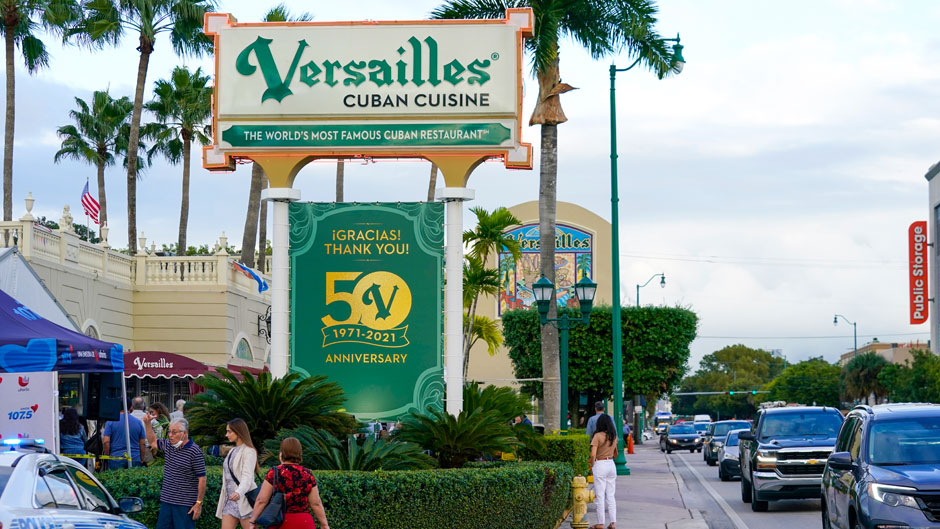More than 35 scholars representing 18 international universities offered presentations based on essays they had written for the “Migration and Urbanization in Three Continents” conference held virtually March 24, 25, and 28 and co-sponsored by the University of Miami’s Institute for Advanced Study of the Americas and the School of Law.
Conference proceedings will be compiled and published in book format—a tangible product of the University’s Immigration Initiative launched in November 2019.
“Since the dawn of civilization, population movements and the rise of towns have been imminently linked,” Alejandro Portes, a research professor in the Department of Sociology and Criminology, said in opening remarks. “Migratory movement and the evolution of cities are like two sides of the same coin.”
The renowned sociologist and author highlighted that while the conference was taking place as the largest humanitarian crisis in modern history is unfolding in Ukraine and across Europe, participants would remain focused on the nine cities chosen strategically across three continents—Latin America, the United States, and Europe—to be studied.
Felicia Knaul, director of the institute and professor at the Leonard M. Miller School of Medicine, highlighted the scholarly and interdisciplinary focus of the conference.
“The caliber and breath of each component of the conference guarantees that we will keep advancing our knowledge on migration, a key catalyst of both development and poverty in Miami, the Americas, and globally,” Knaul said.
“We come together to learn about a process—the complex interplay of migration and urbanization—that too often has divided, but should, in fact, unite our world,” added Knaul, emphasizing the value of using innovative technology and communication tools that have emerged during the pandemic for this endeavor.
She highlighted projections that show by 2060, two-thirds of the world’s population will live in urban centers. And the cities chosen for the conference were among the most urbanized in the world.
“Our world is deeply unprepared and, so, too often unwilling to receive these individuals [migrants] and to believe in all they can bring to our globalized world,” Knaul said.
Portes and Margarita Rodriguez, program coordinator at the institute, served as principal organizers for the conference, which included a presentation by Carie Penabad, associate professor, and Adib Cure, associate professor of practice, both faculty members for the School of Architecture. Rebecca Sharpless, director of the immigration clinic at the School of Law, and Alex Piquero, professor and chair of the Department of Sociology and Criminology, served as presentation commentators.
Portes explained that the conference and the book to follow explore two major questions: What successive waves of migration have done to cities in which the migrants settled and, conversely, what these cities—their governing elites and populations—have done to migrants.
“There has been a cultural, social, and political evolution,” Portes pointed out. “For it is true that there was a resident population and a resident authority structure in each of these cities where migrants arrived—these cities were not empty shells and their social and political structures have evolved.”
He noted that the nine cities chosen—Buenos Aires, Sao Paulo, Mexico City, Los Angeles, Miami, New York, Stockholm, Barcelona, and London—were selected as strategic entry points to study, both historically and at present, the interface of the two movements.
In their session about Miami, Penabad and Cure shared a unique perspective that explored the impact of Cuban migration on architecture in Miami, influences that countered the suburban-based designs popular at that time.
“The mass migration of Cuban migrants fleeing the [Cuban] revolution had a profound impact on the structure of the city as waves and waves arrived and they sought to recapture aspects of their homeland amidst the largely alienating landscapes that were present,” Penabad said.
Featuring images and history of Los Pinarenos Fruteria, El Palacio de los Jugos, and Café Versaille—three iconic structures within the area of Little Havana—the architects explored the distinctness in style and attempts of the buildings “to reconstruct memory through a point of reference in time.”
“This migration created a cross-cultural phenomenon where Cuban and American social realities merged to produce a contemporary urbanism that is uniquely Miami,” the architects noted in their report.
In closing remarks to attendees, President Julio Frenk said that the conference forms an “integral part” of the Immigration Initiative and advances the University’s strategic plan and Roadmap to Our New Century.
“One of our priorities is to support teams of scholars from multiple disciplines to address the complex challenges of society,” Frenk said. “Our aim is to use interdisciplinary insights from the natural sciences, the social sciences, and the humanities to allow us to better understand major global problems and then translate integrated and interdisciplinary research into actionable solutions.’’
The president said he was encouraged by the insights shared at the conference. “I look forward to the continued collaborative effort of this collective on migration and urbanization,” Frenk indicated.

